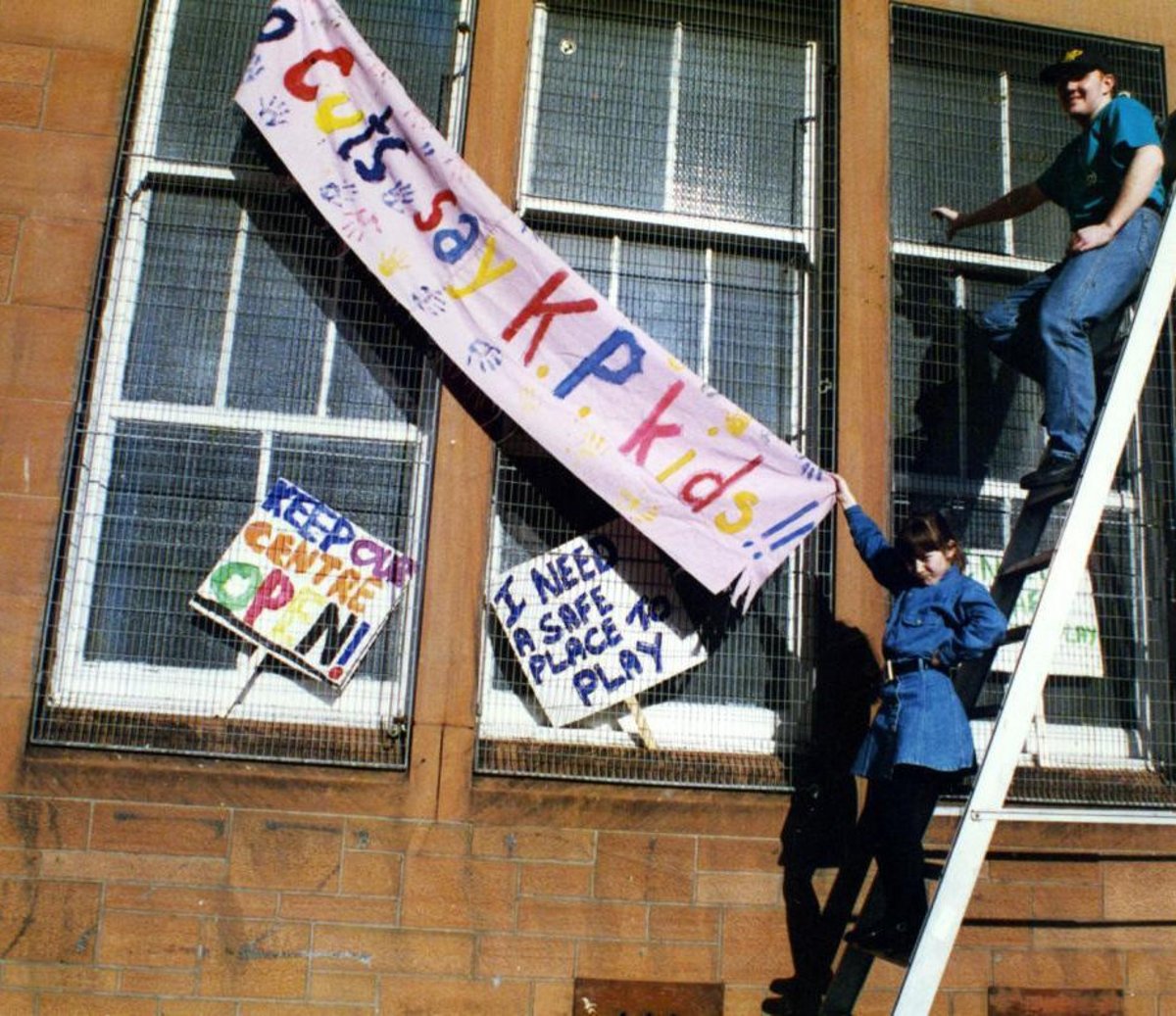Kinning Park Complex: The incredible story of how a group of mothers saved a great Glasgow building
By By The Newsroom
Copyright glasgowworld

There was a night when Helen Kyle was in solitary vigil during her sit-in at the Kinning Park Complex when she was awoken by an almighty crash two floors up. Joined in the sprawling red sandstone building only by a council employee who apparently dared not exit his room – “he wasn’t going to leave his office,” Helen said. She decided that she had three options; Stay put, leave the building and risk the council locking the doors on her or find out what had happened. “I decided I would come out and try and find out what happened. So I was walking up each level, checking the halls, and I got up here, and I got as far as that step,” Helen points to the top of the third floor landing as we walk up. “My mum died when I was seven years old, and I swear to you, she was standing there when I got to the top of the steps. “What happened is the roof was nothing like this and it was so old it had actually smashed onto the floor. And my mum said to me, ‘Helen, it’s okay. It’s only the windows. You don’t need to worry. Away back down and get into your sleeping bag, I will watch over you’. And I actually did. The next morning, when I woke up, I actually couldn’t believe it. This building is called Meg after my mother.” These days, the Kinning Park Complex is an important hub offering up space and activities for the wider community. But 30 years ago it was at the centre of a campaign that would see it saved from being mothballed. Built as the domestic science block of the nearby Lambhill Street School, the building opened in the early 20th century and operated until the the mid-1970s when it became the Kinning Park Neighbourhood Centre, run by the then Strathclyde Regional. It was an important space for sports and recreational classes. But perhaps most importantly, it ran the KP School’s Out Service, an afterschool club. With investment required to repair the building and mounting costs. The council decided to close it in May 1996. But it would be met with fierce resistance from local campaigners – specifically those mothers who came to rely on the building for childcare. What would follow was a 55 day long sit-in conducted by campaigners and those women who relied on the centre for childcare who believed that the building belonged to the taxpayer and would fight tooth and nail to see it stay open. It came at a time when Glasgow was at the forefront of protest, both nationally and locally. Just a mile or so down the road had been the site of the Pollok Free State, the staunch, community led opposition to the M77 expansion through one of the city’s great parks. The Poll Tax and the demonstrations that its implementation in Scotland spurred on, were also fresh in the mind. At the heart of it all was the Kinning Park Neighbourhood Centre. In the end, the Kinning Park group would prevail, and the council handed the keys over to the community for the peppercorn rent of £1. Helen’s organisation Scotland in Europe took over the management of the building, with financial support coming primarily from artists and organisations who would rent out the old classrooms and halls to generate an income for the building. It was an imperative that it became self-sustaining, given the council’s attitude to funding. “If you come looking for money from us, you can forget it,” Helen and the group were warned by council officials. Even when it looked like a community asset could be saved, there was still a less than conciliatory tone from councillors who saw the movement as “arty-farty”. “It’s interesting that there were councillors who said to me ‘look hen, don’t bring your arty-farty ideas over here, we’re workers’ and I said ‘I am a worker. I left school at 15 and worked in Paisley Mills, what are you going to do about that?’” Helen remembered. What Helen did find though was support from communities across Glasgow who had faced up to similar struggles. “We had guys from the shipyard who had been on the sit-in and they used to come and bring us food,” Helen remembers. There was further support from community centres around Glasgow. “All the community centres from Castlemilk, Easterhouse and Drumchapel came and supported us. So during the day it was very, very active. On the weekends we’d have roller discos!” Helen stepped away from her role at the Kinning Park Complex in 2009, 13 years after saving the building. There have been rocky roads in the intervening years, but the complex 30 years on from the sit-in, the legacy of that time is as much about what happened to save the Kinning Park Complex as what came next. A number of those who were involved have gone on on to bring their own community places to the city – including Stasia Rice, who was one of the first artists to take a room at the complex, and All across Govan there are arts communities making a difference. “You start with a sit-in, and get a bit of vision and you take it further,” Helen said. “From that small beginning, people have progressed and that’s what is really, really good. It started at grassroots level. Instead of waiting for the top to come to us, we’ve tried to go from grassroots upwards.” The building is having something of a re-launch as it takes part in Glasgow Doors Open Day 2025. Three years on from a renovation and re-opening, it is a reminder that the building is still here and still a part of the community, according to its director Bruce McDowall. “We get so many people coming to us and saying ‘oh, I thought you had closed’ All that fantastic work that Helen is talking about,” he said. “We don’t want to see lose that. We want to keep the community engaged, we want to keep the community at the heart of it.” Kinning Park Complex will open its doors throughout Doors Open Day 2025.



